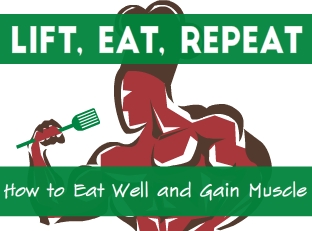This guide to cheap protein sources is designed to help everyone from budget-conscious bodybuilders to Meatless Monday fans to recovering "junk food" vegans find the information they need to get more protein in their diet without stressing their wallets or the environment.
Jump straight to protein sources and recipes for meat and fish eaters.
To protein sources and recipes for vegetarians.
To protein sources and recipes for vegans.
Otherwise, read on to learn about protein and daily protein requirements.
Why Do I Need Protein?
Protein is commonly associated with muscle building, but in reality, protein is responsible for a lot more than The Rock's ripped physique. From your hair to your toenails, every single cell in the human body contains protein. Proteins are involved in all body processes, from cell repair to digestion. 1
How Much Protein Do I Need?
The minimum for daily protein consumption is widely considered to be 0.8 grams for every kilogram of body weight. 2 This number is probably adequate for the average person looking to maintain the amount of muscle they have. The table below shows how many grams of protein are recommended for adults to consume each day based on their body weight.
Recommended Daily Protein Intake for Adults to Maintain Muscle Mass
But if the recommendations above reflect the amount of protein people need "to keep from slowly breaking down their own tissues"
2, is it really enough for people who exercise regularly or people wanting to gain muscle mass?
It is hard to find conclusive answers, as age, gender, fitness level, exercise intensity and duration, diet (what you eat outside of your protein consumption), and many other factors have an impact on an individual's protein needs.3 For example, there is evidence to suggest that advanced weightlifters are more efficient at utilizing protein and therefore actually could require less protein than people new to the sport.4
That said, the scientific literature on the subject seems to suggest some additional protein can certainly be beneficial for athletes, such as runners and weightlifters. Refer to the chart below. The full articles can be found online for those who wish to read the studies.
Protein Consumption Recommendations for Athletes from 7 Sources
(Grams of Protein per Kilogram of Body Weight Per Day)
| Author | Recommended Protein Intake |
|---|---|
| Batheja et al. | 1.2-2.2 g |
| Kreider | 1.3-1.8 g |
| Lemon | 1.2-1.7 g |
| Lemon | 1.6-1.8 g |
| Lemon | 1.5-2.0 g |
| ADA | 1.4-1.7 g |
| Phillips | 12-15% of daily calories |
Adapted from "Contemporary Issues in Protein Requirements and Consumption for Resistance Trained Athletes" by Jacob Wilson and Gabriel J. Wilson, 2006, Journal of the International Society of Sports Nutrition, 3(1), p. 7-27.3
Although these studies all support eating more than the "recommended" 0.8 grams per kilogram body weight, their findings also suggest you are right to be cautious when hulky gym rats advise you to slam protein shakes and eat a whole cow for lunch every day. A study published in the Journal of Applied Physiology in 1992, for example, found that there seemed to be a ceiling effect where additional protein (2.4 grams per kilogram of body weight compared to 1.4 grams per kilogram of body weight) ceased to improve protein synthesis in strength training athletes.5 Thus, consuming protein far above the recommendations in the above table might not be beneficial.

Extra protein can also mean extra stress for the kidneys (though this is not really a serious issue unless you have diabetes or kidney disease 6), and it will definitely send your grocery bill through the roof if you're purchasing high-quality meat or fish. Instead, experiment with the moderate increases backed by the studies above-- between 1.2 and 2.2 grams of protein per kilogram body weight-- and see if it helps you achieve the results you want.
By the way, the issue of whether to believe "the egghead in the lab or the muscle-head in the gym" has been addressed by Alex Hutchinson in his 2011 book Which Comes First, Cardio or Weights?: Fitness Myths, Training Truths, and Other Surprising Discoveries from the Science of Exercise along with numerous other fitness myths and truths.
Now that you have a better idea how much protein you need a day—depending on your individual goals—you're probably ready to read about some cheap protein sources to get you there.
Cheap Protein for Meat-Eaters and Fish-Eaters
- Liver - 20 g protein per 100 g (~54 g protein/$1)
- Cheap Cuts - 22-28 g protein per 100 g (~30-44 g protein/$1)
- Ground beef - 25 g protein per 100 g (~32 g protein/$1)
- Canned fish - 25 g protein per 100 g (~25 g protein/$1)
- Parmesan - 35 g protein per 100 g (~17 g protein/$1)
- Gelatin - 85 g protein per 100 g (~12 g protein/$1)
- Quark or Cottage Cheese - 12-14 g protein per 100 g ( ~10-25 g protein/$1*)
- Eggs - 12.5 g protein per 100 g (~23 g protein/$1)
- Milk - 3.4 g protein per 100 g (~20 g protein/$1)
- Peanut Butter - 25 g protein per 100 g (~70 grams protein/$1)
- Vital Wheat Gluten - 75 g protein per 100 g (~52 g protein/$1)
- Beans, Lentils, Chickpeas, Green Peas - about 9 g protein per 100 g cooked/canned (~30 g protein/$1)
- Edamame - 11 g protein per 100 g (~14.5 g protein/$1)
- Tofu - 7 g protein per 100 g (~10 g protein/$1)
- Whole Wheat Pasta - 15 g protein per 100 g (dry) (~29 g protein/$1)
- Brown Rice - 8 g protein per 100 g uncooked (~25 g protein/$1)
- Oats - 17 g protein per 100 g uncooked (~43 g protein/$1)

Common supermarket varieties are beef, chicken, and calf liver. Liver is not only high in protein, but also rich in several vitamins and minerals.

Though less-tender cuts of meat might not be as appealing as filet mignon, with the proper cooking technique you can eat well and get your protein for much less. Slow cooking techniques are great here-- simmer, braise, or roast your way to a flavorful and tender dish. Example cuts: pork butt, pork shoulder, round roasts. Chicken legs and wings and even whole birds are a better value (protein per dollar) than the ever-popular chicken breasts.

Ground beef is inexpensive and so versatile, making it one of our favorite cheap protein sources. Just be sure to always cook ground meat thoroughly, because ground meat has more surface area (compared to say, a steak) that can be exposed to bacteria.

Skip the chicken of the sea. If you really, really love tuna then make sure you find a brand that is sustainable and not going to put your mercury levels through the roof with regular consumption. Sardines and anchovies are safe, sustainable choices, but you might have to experiment if you're not into their fishy taste. Perhaps more palatable are canned herring, canned mackerel, and of course, canned wild salmon.

Since parmesan cheese is about 35% protein, it is great for adding flavor (and a little extra protein) to a meal just before serving. If you're wondering why parmesan is under the meat- and fish-eater section, it's because parmesan is often made with animal rennet (enzymes from the stomach of the calf.)

Although gelatin is 85% protein, it is actually not a good protein source. This is because the protein in gelatin has a low biological value and is not easily used by the body. 7 Moreover, the amount of gelatin needed in most recipes is too small to make any sizable impact on your daily protein intake.
It is possible, however, that gelatin has other health benefits. Though there is admittedly not yet enough evidence to confirm these claims, some believe gelatin's collagen can help strengthen bones and joints and improve the condition of one's hair and fingernails. 8 So while gelatin is not an ideal protein source, gelatinous desserts might still be a better choice than your average chocolate chip cookie.
Example Recipes for Meat-Eaters and Fish-Eaters

Breakfast: Salmon Quiche, Sunny Side Up Eggs with Anchovies and Parmesan, Liver, Beef, And Garlic Muffins
Lunch or Dinner: Herring Fish Cakes, Canned Salmon Quesadillas, Pulled Pork Sandwich, Spicy Coconut Chicken Casserole, Cheeseburger Salad, Loaded Sweet Potato Nachos
Snacks: Sardine Salad in Avocado, Scotch Eggs, Chopped Liver with Caramelized Onions
Desserts (with gelatin): lemon quark cheesecake, cranberry-orange gelatin mold, grapefruit mousse
Cheap Protein for Vegetarians (and Everybody Above)

Quark is a German soft cheese popular among athletes for being high in protein and low in fat. If you cannot find quark (or if it is too expensive where you are), cottage cheese is another high-protein, low-fat soft cheese that can be used in a variety of meals. If you think you cannot stand the texture, try our protein pancake recipe below. You will be surprised. *Quark is sometimes as cheap as cottage cheese, but it can be more expensive because it is less common and sometimes imported.

Eggs are a great source of cheap protein, and the protein eggs contain is said to have high "biological value". This means the body is able to use a large percentage of the protein present in eggs-- as much as 94% (compared to 82% for milk, 73% for beef, 67% for wheat gluten, and 61% for soy protein.) 9 Don't skip the yolks—they contain most of the vitamins and minerals!

Most dairy products are good cheap protein sources for vegetarians, but milk is an especially good choice because, like eggs, its protein has a high biological value. In fact, chocolate milk is considered one of the best post-workout drinks because of its protein and carbohydrate content. 10 Milk, chocolate or not, is of course a good source of calcium as well.
Example Recipes for Vegetarians

Breakfast: Vegetarian Huevos Rancheros, Kale Potato and Onion Frittata, Chocolate Blueberry Smoothie, Classic Cottage Breakfast, Protein Pancakes
Lunch or Dinner: Shakshuka, Beet and Bean Burgers, Broccoli Cheddar Soup, Chickpea Casserole, Cottage Cheese, Cherry Tomatoes And Rocket
Snacks: Hard Boiled Egg, Cottage Cheese with Fruit, Veggies Dipped in Quark Mixed with Herbs (Fresh or Dried)
Dessert: Avocado Cacao Mousse, Strawberry Cheesecake
Cheap Protein for Vegans (and Everybody Above)

Nuts are good sources of healthy fats and protein, but peanuts are actually legumes, which explains why they contain more protein than almonds, cashews, walnuts, and other true nuts. Peanut butter is an economical and convenient way to add protein to a vegan diet, assuming you don't have a peanut allergy. If you do, other nut or seed butters might be an option, though they are often much more expensive.

Vital wheat gluten is 75% protein and comes from wheat, making it an popular cheap protein source for vegans. It is used in bread baking, but is also commonly used to make seitan, a popular meat substitute. You might also find vital wheat gluten in veggie burger recipes, as it can help hold them together.

Like peanuts, all these legumes are high in plant-based protein. They also provide a substantial amount of fiber, folate, and iron. And of course, they are extremely affordable (both dried and canned) and can always be kept on hand in the pantry.

Soy products are also high in protein and generally reasonably priced. However, soy-based meat substitutes—pre-made meatless crumbles, veggie burgers, etc.—are usually made from highly-processed soy protein concentrate and can contain artificial flavorings, coloring, and other additives. Plus, non-organic soy products likely contain genetically-modified ingredients. If either of these issues is important to you, look for certified organic, "whole" soy foods like edamame and tofu.

Whole grains can be a good source of cheap protein in a vegan diet, though you will have to consume more calories to reach the same amount of protein that you would get for less calories from meat, fish, and dairy. For example, 7 grams of protein from cooked whole wheat pasta will cost you 174 calories, while 7 grams of protein from pan-browned ground beef (70% lean) comes with just 76 calories. For this reason, relying on carbohydrates for your protein could be problematic. In any case, whole wheat flour, whole wheat pasta, and brown rice are all higher in protein than their white flour counterparts. Wheat germ and bran are also good options.
Example Recipes for Vegans

Breakfast: Double Chocolate Sweet Potato Oatmeal, Purple Power Breakfast Shake, Tasty Tofu Scramble
Lunch or Dinner: Black Bean Tacos with Seitan, Peanut Noodle Salad, Chickpea Cutlets, Broccoli and Tofu Stir-Fry
Snacks: Very Berry Delicious Burrito, Vegetables Dipped in White Bean and Edamame Hummus
Dessert: Banana Pudding Ice Cream, Pumpkin Pie Tart with Chocolate Crust
What about Protein Powders?
Of course, there are tons of protein powders on the market suitable for just about any diet. Our protein eBook goes into more detail about which type might be best for you. For now, know that not all protein powders are created equal. If you consume animal products, whey protein is widely considered a high-quality protein source. 9 If you don't, soy, hemp, rice, and pea protein powders are just some of the many plant-based options available.
Since you were interested enough in cheap protein sources to get this far, I highly recommend you read our protein eBook to learn more about protein timing, protein quality, and other important topics for people trying to gain weight and eat well.
Recommended Read
Lift, Eat, Repeat
This protein eBook covers when to eat protein, which types of protein are best, and which foods are highest in protein. It addresses the most common questions regarding these topics in clear, easy-to-digest chapters based on numerous scientific studies.
All Protein Sources Compared
| Name | Calories per 100 g | Protein per 100 g | Protein per $1 |
|---|---|---|---|
| Beef liver | 135 | 20.4 | 54.2 |
| Chicken liver | 119 | 16.9 | 47.4 |
| Calf liver | 140 | 19.9 | 30.0 |
| Pork Butt | 132 | 18.7 | 33.8 |
| Pork Shoulder | 148 | 19.6 | 32.7 |
| Beef Shoulder Roast | 178 | 28.5 | 30.0 |
| Chicken Legs | 219 | 16.4 | 57.1 |
| Whole Chicken | 223 | 24.0 | 36.0 |
| Ground Beef | 234 | 25.1 | 32.3 |
| Canned Anchovies | 210 | 28.9 | 8.1 |
| Canned Sardines | 208 | 24.6 | 25.5 |
| Canned Wild Salmon | 138 | 23.1 | 13.8 |
| Canned Herring | 217 | 24.6 | 24.6 |
| Canned Mackerel | 156 | 23.2 | 54.1 |
| Parmesan | 392 | 35.8 | 17.0 |
| Gelatin | 335 | 85.6 | 12.0 |
| Quark* | 73 | 13.6 | 10.29 |
| Cottage Cheese | 72 | 12.4 | 24.8 |
| Eggs | 143 | 12.6 | 23.0 |
| Milk | 42 | 3.4 | 19.9 |
| Peanut Butter | 588 | 25.1 | 70.3 |
| Vital Wheat Gluten | 370 | 75.2 | 52.6 |
| Beans | 113 | 7.5 | 30.1 |
| Lentils | 116 | 9.0 | 31.5 |
| Chickpeas | 164 | 8.9 | 49.6 |
| Green Peas | 81 | 5.42 | 13.8 |
| Edamame | 122 | 10.9 | 14.5 |
| Tofu | 62 | 6.9 | 10.2 |
| Whole Wheat Pasta | 348 | 14.6 | 29.2 |
| Brown Rice | 370 | 7.9 | 24.7 |
| Oats | 389 | 16.9 | 43.0 |
Sources
- Zieve, D., & Eltz, D. (2011). Protein in diet. Retrieved from http://www.nlm.nih.gov/medlineplus/ency/article/002467.htm
- Protein: Moving closer to center stage. (n.d.). Retrieved from http://www.hsph.harvard.edu/nutritionsource/protein-full-story/
- Wilson, J., & Wilson, G. (2006). Contemporary issues in protein requirements and consumption for resistance trained athletes. J Int Soc Sports Nutr., 3(1), 7–27. Retrieved from http://www.ncbi.nlm.nih.gov/pmc/articles/PMC2129150/
- Phillips, S. (2004). Protein requirements and supplementation in strength sports. Nutrition Journal, 20(7), 689-695. Retrieved from http://www.nutritionjrnl.com/article/S0899-9007(04)00100-5/abstract
- Lowery, L. (2012). Dietary protein and resistance exercise (p. 5). CRC Press.
- Protein. (n.d.) Retrieved from http://www.hsph.harvard.edu/nutritionsource/protein-questions/
- Brown, A. (2010). Understanding food: principles and preparation. Cengage Learning.
- Djagny, K., Wang, Z. & Xu, S. (2001). Gelatin: a valuable protein for food and pharmaceutical industries: review. Critical Reviews in Food Science and Nutrition, 41:6, 481-492. Retrieved from: http://www.cfs.purdue.edu/fn/fn453/Gelatin%20chemistry.pdf
- Hoffman, J., & Falvo, M. (2004). Protein - Which is best?. Journal of Sports Science and Medicine, 3, 118-130. Retrieved from: http://www.jssm.org/vol3/n3/2/v3n3-2pdf.pdf
- Karp, J., Johnston, J., Tecklenburg, S., Mickleborough, T., Fly, A. & Stager, J. (2006). Chocolate milk as a post-exercise recovery aid. International Journal of Sport Nutrition and Exercise Metabolism, 16, 78-91. Retrieved from: http://oakbrooksc.com/docs/stager_chocmilk_study.pdf








